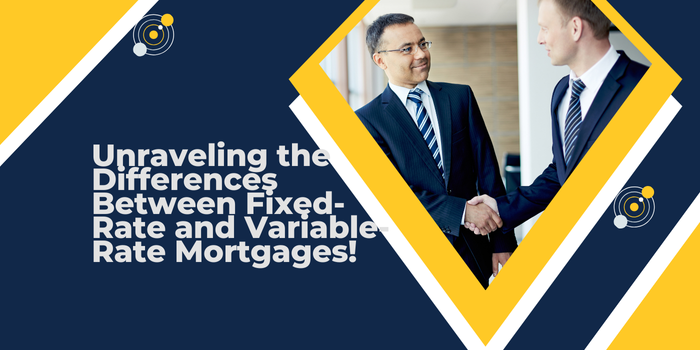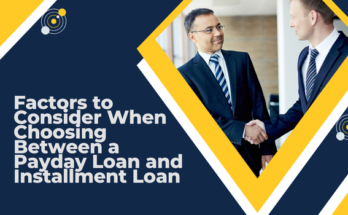Navigating the world of mortgages can feel like entering a labyrinth of financial jargon and complex terminology. One of the fundamental decisions that borrowers face when selecting a mortgage is choosing between a fixed-rate and a variable-rate mortgage. Each option comes with its own set of advantages and considerations, making it essential for homebuyers to understand the differences before making a decision. In this comprehensive guide, we’ll demystify fixed-rate and variable-rate mortgages, empowering borrowers to make informed choices that align with their financial goals and preferences.
Understanding Fixed-Rate Mortgages:
Fixed-rate mortgages are straightforward and predictable, offering borrowers a stable interest rate that remains constant throughout the life of the loan. With a fixed-rate mortgage, borrowers know exactly what their monthly mortgage payment will be, providing certainty and peace of mind. This stability makes fixed-rate mortgages an attractive option for borrowers who prefer consistency and want to avoid fluctuations in their mortgage payments.
Advantages of Fixed-Rate Mortgages:
Predictable Payments: Borrowers benefit from knowing exactly how much their mortgage payment will be each month, making budgeting and financial planning easier.
Protection Against Rate Increases: Fixed-rate mortgages shield borrowers from potential interest rate hikes in the future, providing security and stability in uncertain economic conditions.
Long-Term Planning: Fixed-rate mortgages are ideal for borrowers planning to stay in their homes for an extended period, as they offer stability and protection against rising interest rates over time.
Considerations for Fixed-Rate Mortgages:
Higher Initial Rates: Fixed-rate mortgages typically have higher initial interest rates compared to variable-rate mortgages, which may result in higher monthly payments, especially in a low-interest-rate environment.
Limited Flexibility: Once locked into a fixed-rate mortgage, borrowers are committed to the same interest rate for the duration of the loan term, limiting their ability to take advantage of lower rates in the future through refinancing.
Understanding Variable-Rate Mortgages:
Variable-rate mortgages, also known as adjustable-rate mortgages (ARMs), feature interest rates that fluctuate over time based on changes in market conditions. These mortgages typically start with an initial fixed-rate period, during which the interest rate remains constant, followed by a variable-rate period, where the rate adjusts periodically according to an index, such as the prime rate or LIBOR.
Advantages of Variable-Rate Mortgages:
Lower Initial Rates: Variable-rate mortgages often start with lower initial interest rates compared to fixed-rate mortgages, resulting in lower monthly payments during the initial fixed-rate period.
Potential for Savings: Borrowers may benefit from lower interest rates and reduced monthly payments if market interest rates decline during the variable-rate period, potentially saving money over the life of the loan.
Flexibility: Variable-rate mortgages offer borrowers flexibility and the opportunity to take advantage of falling interest rates through refinancing or adjusting their mortgage terms.
Considerations for Variable-Rate Mortgages:
Rate Volatility: Variable-rate mortgages are subject to interest rate fluctuations, which can lead to unpredictable changes in monthly payments and financial uncertainty for borrowers.
Risk of Rate Increases: During the variable-rate period, borrowers are exposed to the risk of interest rate hikes, which can result in higher monthly payments and increased borrowing costs over time.
Budgeting Challenges: The variability of monthly payments in variable-rate mortgages can make budgeting and financial planning more challenging, as borrowers may need to account for potential rate adjustments and fluctuations in housing expenses.
Factors to Consider When Choosing Between Fixed and Variable Rates:
Financial Goals and Preferences: Consider your long-term financial goals, risk tolerance, and preferences when deciding between fixed and variable-rate mortgages.
Market Conditions: Evaluate current and projected market conditions, including interest rate trends and economic indicators, to assess the potential impact on mortgage rates and borrowing costs.
Length of Ownership: Consider how long you plan to stay in your home and whether you prefer the stability of a fixed-rate mortgage or the potential savings of a variable-rate mortgage.
Consultation with Mortgage Professionals:
When weighing the pros and cons of fixed and variable-rate mortgages, it’s essential to consult with mortgage professionals, such as loan officers or mortgage brokers, who can provide personalized advice and guidance based on your individual financial situation and goals. These experts can help you evaluate your options, understand the implications of each choice, and make an informed decision that aligns with your needs.
Conclusion: Understanding the difference between fixed-rate and variable-rate mortgages
Choosing between a fixed-rate and variable-rate mortgage is a significant decision that can have long-term implications for your finances and homeownership experience. By understanding the differences between these two mortgage types, considering your financial goals and preferences, and seeking guidance from mortgage professionals, you can make a well-informed decision that positions you for success and financial stability on your homeownership journey.



